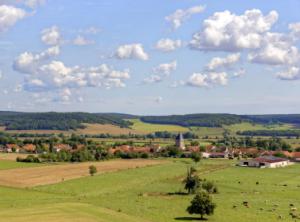Institutional investors increasingly see farmland as an alternative asset with good growth potential.
For example, financial services mammoth TIAA-CREF recently said it has raised $3 billion for its second global partnership in farmland investment, topping the initial estimate of $2.5 billion.
Hedge funds and pension funds showing increasing interest in farmland investment because it allows them to diversify their assets and take advantage of a business slump in the agriculture industry, which has cut land prices in certain regions.
Investment partnership Homestead Capital USA LLC raised $173 million this year for its first farmland investment fund. Among the investors are the Teachers Retirement System of Texas and the University of Alabama, which is making its first cropland investment.
Homestead Capital is led by former executives of Goldman Sachs Group Inc. and J.P. Morgan Chase & Co.
Several U.S. farmland owners have sold their holdings as real estate investment trusts, or REITs, via U.S. stock offerings, allowing individuals investors to bet on farmland, too.
American Farmland Co. in June disclosed plans to raise up to $100 million in a public offering for its REIT. it would be the third REIT with a farmland focus in addition to Farmland Partners Inc., which went public in 2014, and Gladstone Land Corporation, which launched its IPO in 2013.
U.S. farmland has returned an average annual return on investment of 11.8 percent, including income from farming, since 1990, according to an index monitored by the National Council of Real Estate Investment Fiduciaries.
Farmland attracts investors who believe food demand will increase as population increases in Asia, Africa and other parts of the world. Slow growth, if any, in the availability of arable land is foreseen, due in part to increasing urbanization.
Investment diversification also drives demand for farmland. Investors’ interest in farmland is part of their broader gravitation toward such physical properties as timber and office buildings. The values of these “real” assets have little correlation with stock and bond prices.
Institutional investors have plowed more than $2 billion in U.S. farmland in the last two years, according iiSearches, a data unit of media company Institutional Investor.
University of Illinois economist Bruce Sherrick said institutional ownership accounts for less than 1 percent of the $2.4 trillion farm market in the United States, the leading agricultural exporting country in the world.
But Sherrick said institutional investors eventually may own a bigger share of U.S. farmland because many farmers are approaching retirement. Federal statistics show that the average age of farmers is 58. [Wall Street Journal] – Mike Seemuth
